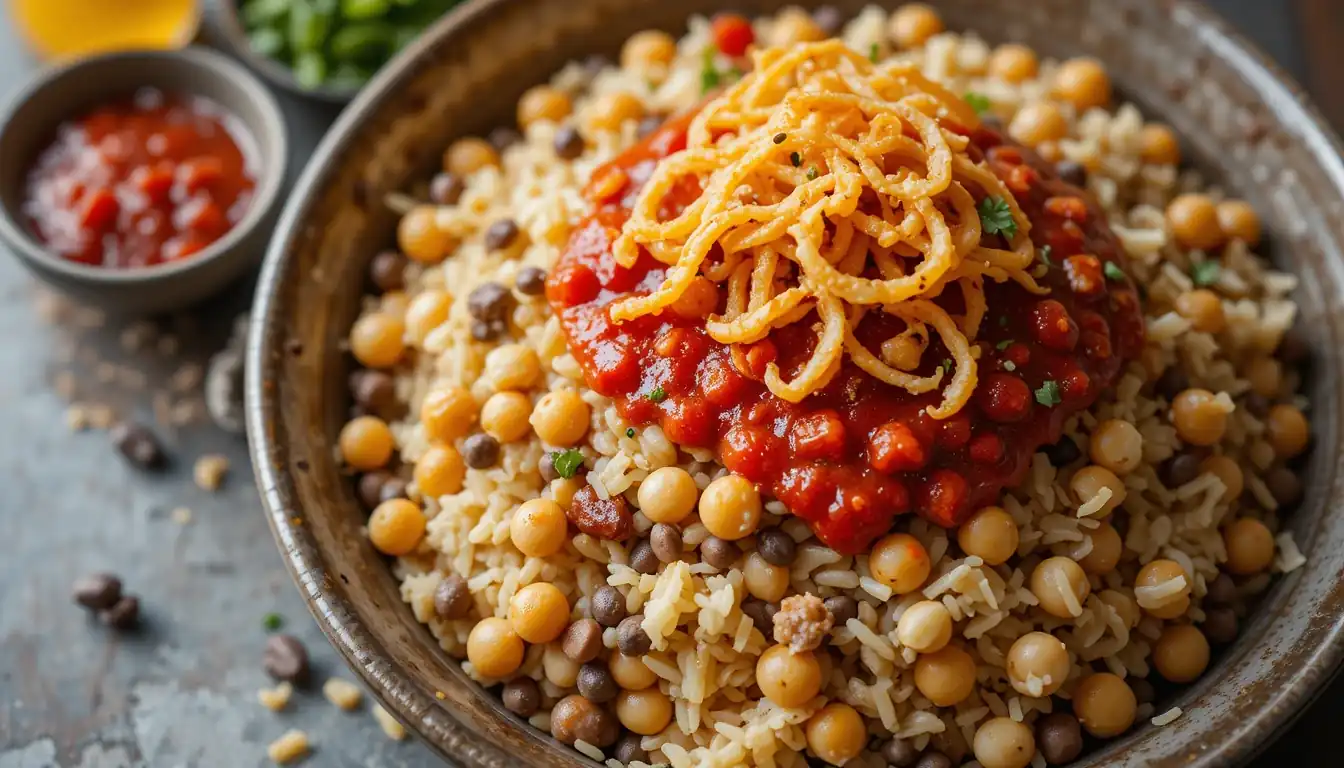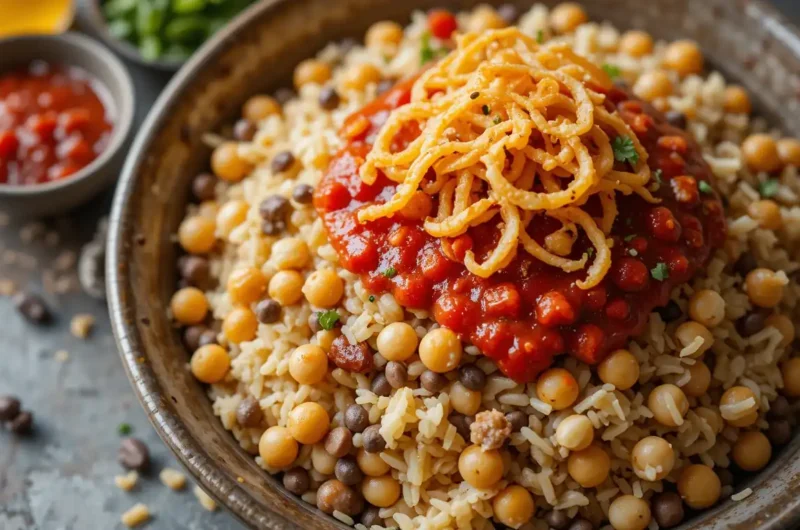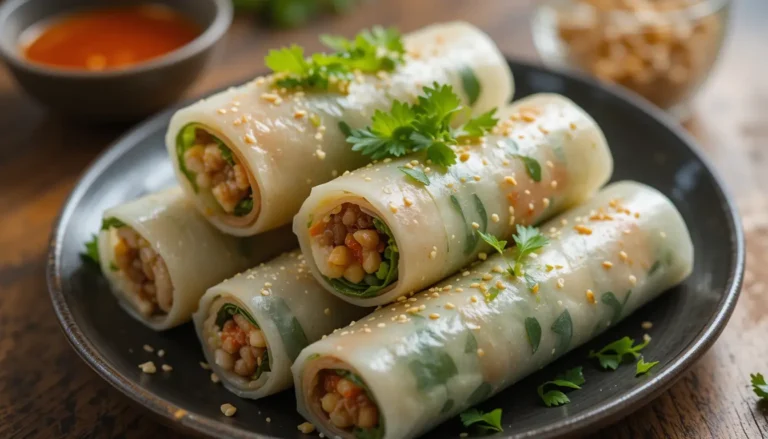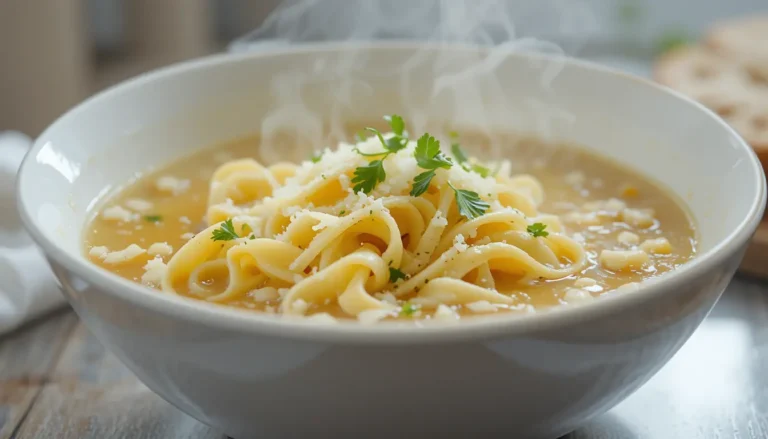Best Egyptian Koshari Street Food: Simple Recipe!
Koshari. Just the name itself rolls off the tongue with a certain exotic flair, doesn’t it? But more than just a catchy name, Koshari is a legend in the world of Egyptian street food. Imagine a dish that’s a symphony of textures and flavors, a hearty, satisfying, and surprisingly affordable meal that you can find on nearly every corner in Egypt. That’s Koshari for you.
Forget your fancy restaurant fare for a moment. Koshari is where it’s at for experiencing the real, vibrant pulse of Egyptian cuisine. It’s the food of the people, the fuel for bustling city life, and once you taste it, you’ll understand why it’s so deeply loved.
In this guide, we’re going to unpack everything you need to know to recreate this iconic street food right in your own kitchen. Get ready to embark on a culinary adventure to Egypt, one delicious bowl of Koshari at a time!
Unveiling the Magic of Egyptian Koshari
What is it about Koshari that makes it so irresistible? It’s more than just a meal; it’s an experience. Let’s break down the components that make Koshari the star of Egyptian street food.
What Exactly Is Koshari?
At its heart, Koshari is a brilliant mix of carbohydrates, legumes, and sauces. Think of it as the ultimate comfort food mash-up:
- Rice: Typically short-grain white rice, forming the base of the dish.
- Pasta: Often macaroni or small elbow pasta, adding another layer of texture.
- Lentils: Brown or green lentils, cooked until tender but still holding their shape, providing a wonderful earthy flavor and protein boost.
- Chickpeas: Boiled chickpeas, adding a creamy, nutty element.
- Crispy Fried Onions: Thinly sliced onions, fried to golden perfection, bringing a crucial crunch and sweet-savory note.
- Tomato Sauce: A rich, tangy tomato sauce, often spiced with garlic and cumin, binding all the components together.
- Garlic Vinegar Sauce (Dakka): A pungent, vinegary, garlic-infused sauce that adds a zing and freshness.
- Chili Sauce (Shatta): For those who like a kick, a fiery chili sauce to dial up the heat.
It sounds like a lot, right? But that’s part of the beauty of Koshari. It’s a delightful jumble of seemingly simple ingredients that, when combined, create something truly special.
Why Koshari is a Street Food Sensation
Koshari’s popularity as street food stems from a few key factors:
- Affordability: The ingredients are inexpensive and readily available, making it a budget-friendly meal for everyone. This accessibility is key to its street food dominance.
- Heartiness and Satisfaction: Packed with carbs and protein, Koshari is incredibly filling. It’s the perfect energy booster for a busy day of work or exploring. You won’t be hungry again for hours!
- Flavor Explosion: The combination of textures – soft rice and pasta, slightly firm lentils and chickpeas, crunchy onions – and the interplay of tangy, spicy, and savory sauces is just addictive. Every bite is a new sensation.
- Vegetarian-Friendly (Mostly Vegan): Koshari is naturally vegetarian and can easily be made vegan (just ensure no animal products in the cooking oils or any optional additions). This makes it a great option for a wide range of diets.
- Quick to Serve: Once the components are prepped, assembling a bowl of Koshari is fast, perfect for the fast-paced street food environment.
A Taste of Egyptian Culture in a Bowl
Koshari is more than just food; it’s woven into the fabric of Egyptian culture. It’s a dish that represents resourcefulness, simplicity, and the vibrant spirit of Egyptian street life. You’ll see Koshari stalls and carts everywhere, from bustling city centers to quieter neighborhoods. It’s a unifying food, enjoyed by people from all walks of life.
Eating Koshari from a street vendor is an experience in itself. The bustling atmosphere, the rhythmic chopping and assembling, the fragrant aromas filling the air – it all adds to the charm. But you don’t need to travel to Egypt to experience the joy of Koshari. Let’s bring that vibrant taste to your kitchen!
Mastering the Art of Koshari: Your Step-by-Step Recipe
Ready to become a Koshari master? Don’t be intimidated by the multiple components. We’ll break it down into easy, manageable steps. Trust me, the end result is so worth it.
Gather Your Koshari Crew: Ingredients List
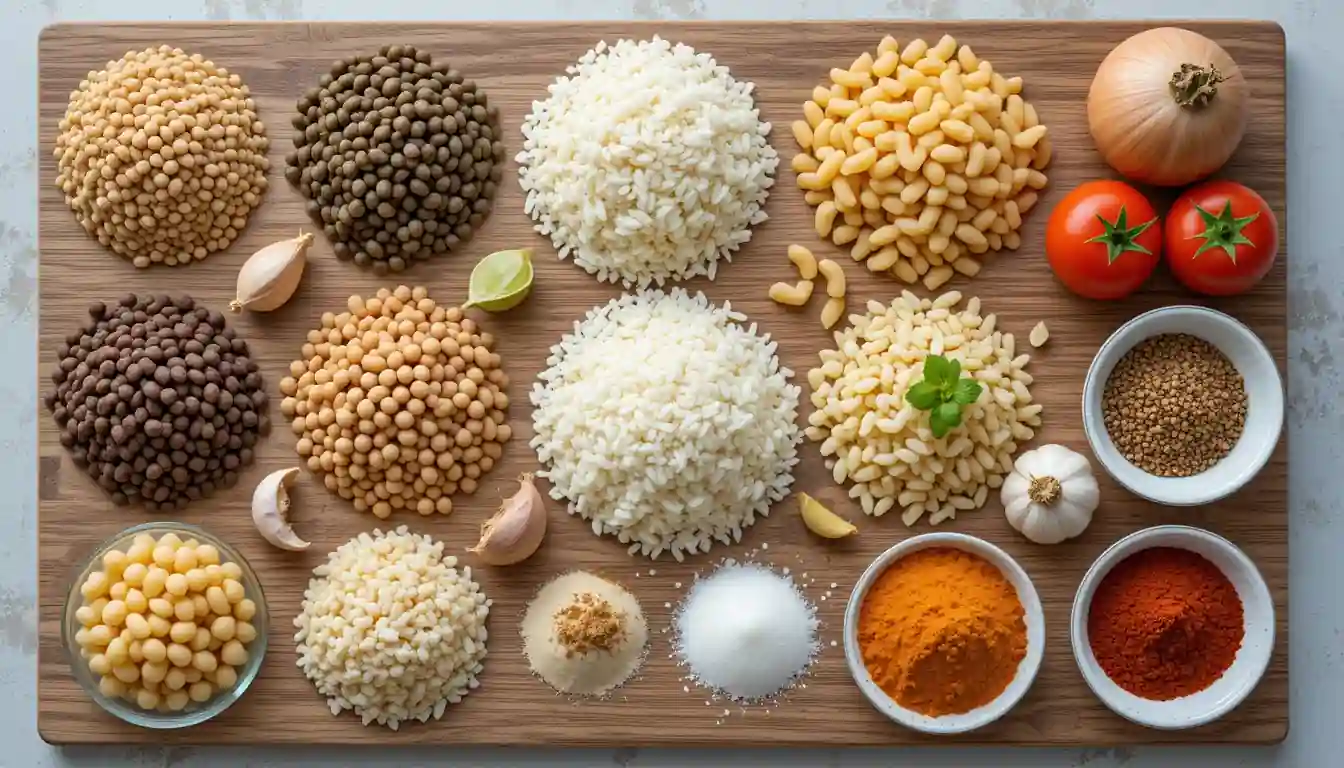
Here’s what you’ll need to assemble your Koshari masterpiece. Don’t worry if you don’t have exactly every ingredient, Koshari is forgiving, and you can often make substitutions.
For the Base:
- 1 cup brown or green lentils, rinsed
- 1 cup short-grain white rice, rinsed
- ½ cup macaroni or elbow pasta
- 1 cup dried chickpeas, soaked overnight (or 2 cans chickpeas, drained and rinsed for quicker version)
For the Crispy Onions:
- 2 large onions, thinly sliced
- Vegetable oil, for frying (enough for deep frying)
For the Tangy Tomato Sauce:
- 2 tablespoons olive oil
- 4 cloves garlic, minced
- 1 (28 ounce) can crushed tomatoes
- 1 tablespoon tomato paste
- 1 teaspoon ground cumin
- ½ teaspoon coriander powder
- Salt and black pepper to taste
- Pinch of sugar (optional, to balance acidity)
For the Garlic Vinegar Sauce (Dakka):
- ½ cup white vinegar
- 4 cloves garlic, minced
- ½ teaspoon ground cumin
- Salt to taste
- Water (optional, to dilute if too strong)
For the Fiery Chili Sauce (Shatta – Optional but highly recommended):
- 6-8 dried red chilies (like cayenne or Thai chilies), soaked in hot water for 30 minutes
- 2 cloves garlic
- 2 tablespoons tomato paste
- 2 tablespoons olive oil
- Salt to taste
- Water (as needed to adjust consistency)
Garnish (Essential!):
- Fresh cilantro or parsley, chopped (optional, but adds freshness)
Let’s Get Cooking: Step-by-Step Instructions
Now, let’s bring it all together. We’ll tackle each component individually and then show you how to assemble your Koshari.
- Preparing the Lentils and Rice:
- Lentils: In a medium saucepan, cover the lentils with water by about 2 inches. Bring to a boil, then reduce heat and simmer for about 20-25 minutes, or until tender but not mushy. Drain any excess water and set aside.
- Rice: In another saucepan, cook the rice according to package directions. Once cooked, fluff with a fork and set aside.
- Cooking the Pasta:
- Cook the macaroni or elbow pasta according to package directions until al dente. Drain and set aside.
- The Chickpea Charm:
- If using dried chickpeas: If you soaked dried chickpeas overnight, drain them. In a large pot, cover the chickpeas with fresh water. Bring to a boil, then reduce heat and simmer for 1-1.5 hours, or until tender. Drain and set aside.
- If using canned chickpeas: Simply drain and rinse the canned chickpeas. You can gently warm them up in a pan if you like.
- Crafting the Crispy Onions (Crucial Step!):
- Heat vegetable oil in a deep frying pan or pot over medium-high heat. The oil should be deep enough to submerge the onion slices.
- Carefully add the thinly sliced onions to the hot oil in batches (don’t overcrowd the pan).
- Fry the onions, stirring occasionally, until they are golden brown and crispy. This will take about 10-15 minutes. Watch them closely, as they can burn quickly towards the end.
- Remove the crispy onions with a slotted spoon and place them on paper towels to drain excess oil. Set aside. Don’t discard the onion-infused oil in the pan – we’ll use it for the tomato sauce!
- Whipping Up the Tangy Tomato Sauce:
- Pour off most of the onion-infused oil from the frying pan, leaving about 2 tablespoons in the pan.
- Heat the oil over medium heat. Add the minced garlic and sauté for about 1 minute, until fragrant (be careful not to burn the garlic).
- Add the crushed tomatoes, tomato paste, cumin, coriander powder, salt, pepper, and sugar (if using).
- Bring to a simmer, then reduce heat and cook for about 15-20 minutes, stirring occasionally, until the sauce has thickened slightly and the flavors have melded together.
- The Fiery Chili Garlic Sauce (Shatta – Optional but Makes it Authentic):
- Drain the soaked dried chilies. In a food processor or blender, combine the soaked chilies, garlic, tomato paste, olive oil, and salt.
- Blend until smooth, adding a little water if needed to reach your desired consistency. Taste and adjust salt and spice levels. Be cautious, this sauce is spicy!
- Assembling Your Koshari Masterpiece:
- Now comes the fun part – layering! In bowls, start with a base of rice.
- Top with a generous spoonful of lentils, followed by pasta and chickpeas.
- Ladle a generous amount of the tangy tomato sauce over the top.
- Drizzle with the garlic vinegar sauce (Dakka) to your liking.
- If you dare, add a spoonful of the fiery chili sauce (Shatta).
- Finally, crown your Koshari with a generous pile of crispy fried onions.
- Garnish with fresh cilantro or parsley, if desired.
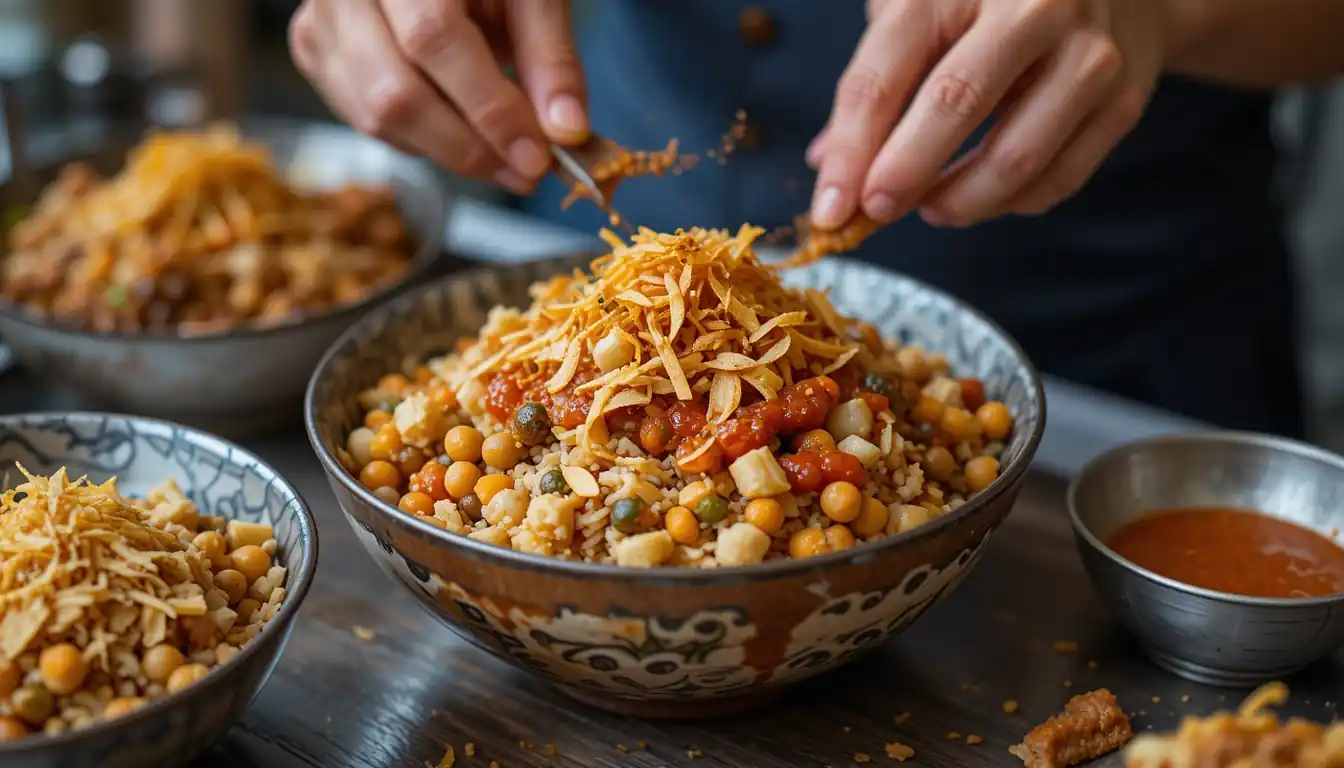
Pro Tips for Egyptian Koshari Street Food Perfection
Want to take your Koshari from good to amazing? Here are a few insider tips:
Spice it Up (or Tone it Down)
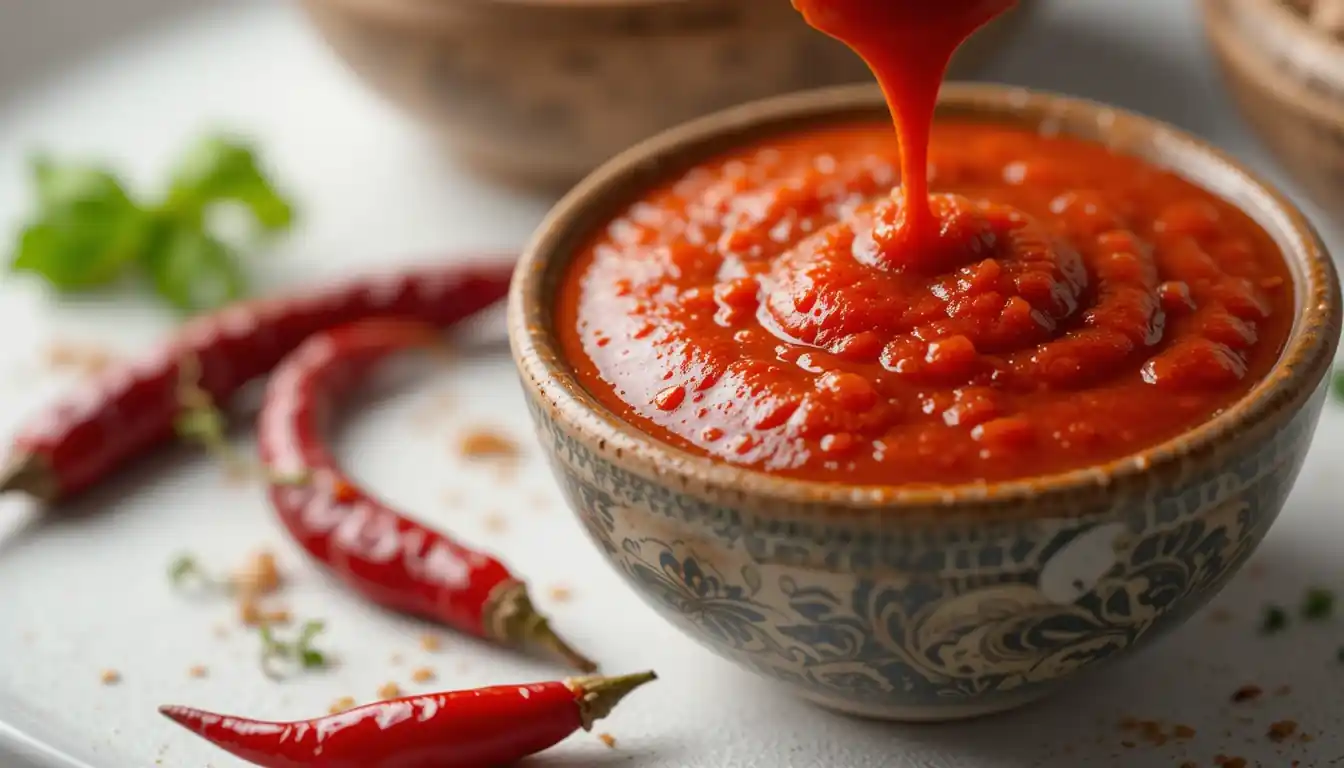
- Adjust the Chili: The Shatta sauce is what brings the heat. Feel free to adjust the amount of chilies in the Shatta recipe to control the spiciness. You can also serve it on the side so people can add their own preferred level of heat. For a milder version, you can even omit the Shatta altogether for a family-friendly meal.
- Spice in the Tomato Sauce: Don’t be shy with the cumin and coriander in the tomato sauce. They are key to that authentic Koshari flavor. You can also add a pinch of red pepper flakes to the tomato sauce itself for an extra layer of warmth.
Make it Ahead (Meal Prep Win!)
- Components Can Be Prepared Separately: The beauty of Koshari is that you can prepare all the components – lentils, rice, pasta, chickpeas, sauces, crispy onions – ahead of time. Store them separately in airtight containers in the refrigerator. This is perfect for meal prepping or when you’re expecting guests.
- Fresh Crispy Onions are Best: While you can make the crispy onions ahead, they are best when freshly made for maximum crunch. If making ahead, store them in an airtight container at room temperature to maintain crispness.
- Assemble Just Before Serving: Assemble the Koshari just before serving to keep the components at their best textures and temperatures.
Storage Secrets
- Store Components Separately: If you have leftovers, store each component separately in airtight containers in the refrigerator. This prevents the sauces from making the rice and pasta soggy.
- Reheat Gently: When reheating, gently warm the rice, pasta, lentils, chickpeas, and tomato sauce separately. You can microwave them or reheat them in a pan on the stovetop with a little water if needed. The crispy onions are best enjoyed at room temperature and might lose some crunch upon reheating.
Egyptian Koshari Street Food: Variations to Explore
Once you’ve mastered the basic Koshari, feel free to experiment!
- Different Legumes: Try using black lentils or even fava beans for a slightly different flavor profile.
- Spicier Dakka: Infuse your Dakka (garlic vinegar sauce) with finely chopped green chilies for an extra kick.
- Vegetable Additions: Some variations include small diced potatoes or carrots cooked with the lentils.
- Toasted Vermicelli Rice: For an even richer base, you can toast some vermicelli pasta in butter or oil before adding the rice and cooking it.
Serving and Enjoying Your Homemade Koshari
Now that you’ve created your Koshari masterpiece, it’s time to serve and savor!
What to Serve With Koshari?
Koshari is a complete meal in itself, but if you want to round out your Egyptian feast, here are some ideas:
- Egyptian Salad (Salata Baladi): A simple salad of tomatoes, cucumbers, onions, and parsley dressed with lemon juice and olive oil. Provides a refreshing contrast to the richness of the Koshari.
- Pickled Vegetables (Mish): Egyptian pickled vegetables add a tangy and crunchy element.
- Fresh Pita Bread: For scooping up any remaining sauce.
- Hibiscus Tea (Karkade): A traditional Egyptian drink that pairs wonderfully with Koshari, both hot and iced.
Embrace the Koshari Experience!
More than just a recipe, Koshari is an invitation to experience the heart of Egyptian street food culture. Gather your friends and family, put on some Egyptian music, and enjoy this flavorful, comforting, and utterly satisfying dish. Don’t be afraid to get messy, mix it all up, and customize it to your liking. That’s the true spirit of Koshari!
Egyptian Koshari Street Food (FAQ)
Got questions about Koshari? We’ve got answers!
Is Koshari Vegetarian/Vegan?
Yes, Koshari is naturally vegetarian. To ensure it’s vegan, simply make sure you are using vegetable oil for frying the onions and that there are no animal-derived products in any optional additions. The core recipe is plant-based and wonderfully vegan-friendly!
Can I make Koshari gluten-free?
Making Koshari completely gluten-free is challenging as it traditionally contains pasta. However, you can make a lower gluten version by:
Using gluten-free pasta: Substitute regular macaroni with gluten-free pasta options (rice pasta, corn pasta, etc.).
Omit the pasta entirely: While not traditional, you can simply increase the amount of rice and lentils to compensate for the missing pasta.
Note: Always check ingredient labels to ensure all components are certified gluten-free if you have celiac disease or severe gluten sensitivity.
Where can I find Koshari in Egypt?
Everywhere! Seriously. Koshari is ubiquitous in Egypt. You’ll find dedicated Koshari restaurants (often called u0022Kosharyu0022), street stalls, and even some regular restaurants will offer it. Just follow your nose – the aroma of crispy onions and tangy tomato sauce will lead you right to it!
What makes Koshari authentic?
Authenticity in Koshari comes down to the balance of flavors and textures. Key elements of authentic Koshari include:
The combination of rice, pasta, and lentils: This is the non-negotiable base.
Tangy and flavorful tomato sauce: Properly spiced and not too sweet.
Pungent garlic vinegar sauce (Dakka): This adds a crucial layer of acidity and freshness.
Crispy fried onions: Don’t skimp on these! They are essential for texture and flavor.
Optional fiery chili sauce (Shatta): For those who like the heat.
Conclusion: Your Koshari Adventure Awaits!
Egyptian Koshari Street Food is more than just a recipe; it’s a journey into the heart of Egyptian cuisine. It’s a dish that’s accessible, affordable, incredibly flavorful, and surprisingly easy to make at home. So, gather your ingredients, embrace the process, and get ready to create a flavor explosion in your very own kitchen. Sahtein! (Enjoy your meal!)
Recipe Card
Best Egyptian Koshari Street Food: Simple Recipe!
Course: Main CourseCuisine: Egyptian6
servings30
minutes1
hour15
minutes300
kcal1
hour45
minutesA flavorful and budget-friendly Egyptian Street Food dish, Koshari is a satisfying mix of rice, lentils, pasta, chickpeas, crispy onions, and tangy tomato and garlic sauces. Easy to make at home!
Ingredients
- For the Base:
1 cup brown or green lentils, rinsed
1 cup short-grain white rice, rinsed
½ cup macaroni or elbow pasta
1 cup dried chickpeas, soaked overnight (or 2 cans chickpeas, drained and rinsed)
- For the Crispy Onions:
2 large onions, thinly sliced
Vegetable oil, for frying
- For the Tangy Tomato Sauce:
2 tablespoons olive oil
4 cloves garlic, minced
1 (28 ounce) can crushed tomatoes
1 tablespoon tomato paste
1 teaspoon ground cumin
½ teaspoon coriander powder
Salt and black pepper to taste
Pinch of sugar (optional)
- For the Garlic Vinegar Sauce (Dakka):
½ cup white vinegar
4 cloves garlic, minced
½ teaspoon ground cumin
Salt to taste
- For the Fiery Chili Sauce (Shatta – Optional):
6-8 dried red chilies, soaked in hot water for 30 minutes
2 cloves garlic
2 tablespoons tomato paste
2 tablespoons olive oil
Salt to taste
Directions
- Prepare Lentils & Rice: Cook lentils in water until tender (20-25 mins). Cook rice according to package directions. Drain and set aside both.
- Cook Pasta: Cook pasta until al dente. Drain and set aside.
- Prepare Chickpeas: Cook soaked chickpeas until tender (1-1.5 hours) or use canned, drained and rinsed. Set aside.
- Make Crispy Onions: Fry thinly sliced onions in hot oil until golden brown and crispy. Drain on paper towels. Reserve onion-infused oil.
- Make Tomato Sauce: In reserved onion oil, sauté garlic. Add crushed tomatoes, tomato paste, cumin, coriander, salt, pepper, sugar (if using). Simmer 15-20 mins until thickened.
- Make Dakka Sauce: Combine vinegar, minced garlic, cumin, and salt. Mix well.
- Make Shatta Sauce (Optional): Blend soaked chilies, garlic, tomato paste, olive oil, and salt until smooth. Add water to adjust consistency.
- Assemble Koshari: Layer rice, lentils, pasta, chickpeas in bowls. Top with tomato sauce, drizzle with Dakka and Shatta (if using). Crown with crispy onions.
- Garnish: Sprinkle with fresh cilantro or parsley (optional). Serve immediately.
Notes
- Adjust Shatta sauce quantity to your spice preference.
Components can be made ahead and assembled later.
Store leftover components separately for best quality.
For vegan Koshari, ensure vegetable oil is used and no animal products are added.

